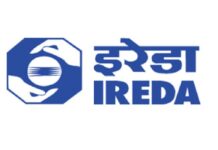The Global Magnetic Resonance Imaging (MRI) Systems Market, which was valued at US$ 7,165.6 Mn in 2017, is projected to reach US$ 11,725.9 Mn by the end of 2025, exhibiting a CAGR of 6.4%. MRI (Magnetic Resonance Imaging) holds the prominent share in diagnostic imaging due to advance spatial resolution and efficient image acquisition with superior imaging qualities. The demand for MRI systems with 1.5 T in global MRI systems market is considerably high due to better value for money ratio in developed as well as emerging nations.
Moreover, rapidly increasing healthcare expenditure coupled with swiftly developing infrastructure in developed nations resulted in increased installation of new MRI systems. Technological advancements as well as extensive research being conducted in neuroscience fueled the adoption of MRI systems with more than 1.5 T in developed nations. Additionally, rising emphasis on optimization in diagnostic imaging resulted into design and development of specialized MRI systems such as breast MRI, neonatal MRI, extremity MRI, and others.
Increasing technological developments, such as inclusion of PET or CT, provide imaging options to reduce exposure to harmful radiation, increasing use of MRI in developing countries, and availability of increased universal health coverage in developed and developing countries are key factors promoting the growth of the global magnetic resonance imaging market Global players like GE, Siemens or Philips are committed to improving technology and global distribution networks that support the growing number of public and private diagnostics centers worldwide.
However, due to the cost-effectiveness and easy availability, the use of refurbished RIM equipment is also much favored in development markets. There are major technological developments on the current market. In addition to the conventional 1.5T-3 T, the limit of the greatest field strength in MRI has expanded to an astounding 7T. This technological leap has increased MRI devices ‘ application profile and is forecast to expand further in the forecast period.
An increase in adoption of MRI systems in hospitals, clinics and diagnostic centers with the highest market share is expected and one of the lucrative investment targets is identified. The market is however divided into open MRIs and closed MRIs based on architecture. In the last few years, the MRI system market has seen large-scale adoption. In the coming years, developments such as application reduction, high image quality and lower-cost scans will prove good growth. This advancement, however, currently has a small value market size.
The research report categorizes the MRI system market into the following segments and subsegments:
MRI System Market, by Field Strength
- High-field MRI systems (1.5T to 3T)
- 1.5T MRI systems
- 3T MRI systems
- Low-to-mid-field MRI systems (<1.5T)
- Very-high-field MRI systems (4T and above)
MRI System Market, by Architecture
- Closed MRI systems
- Standard bore MRI
- Wide bore MRI
- Open MRI systems
MRI System Market, By Geography
- North America (USA and Canada)
- Europe (UK, Germany, France, Italy, Spain, Scandinavia and Rest of Europe)
- Asia Pacific (Japan, China, India, Australia, Southeast Asia and Rest of Asia Pacific)
- Latin America (Brazil, Mexico, Rest of Latin America)
- Middle East & Africa (GCC, South Africa, Rest of Middle East & Africa)
KEY COMPANIES COVERED IN THE REPORT
- GE Healthcare
- Siemens Healthcare
- Koninklijke Philips N.V.
- Canon Inc.
- Hitachi, Ltd.
- Esaote SpA
- Shenzhen Anke High-tech Co., Ltd.
- Time Medical Holding
- SHENZHEN BASDA MEDICAL APPARATUS CO., LTD.
- Fonar Corporation
- Other prominent players















